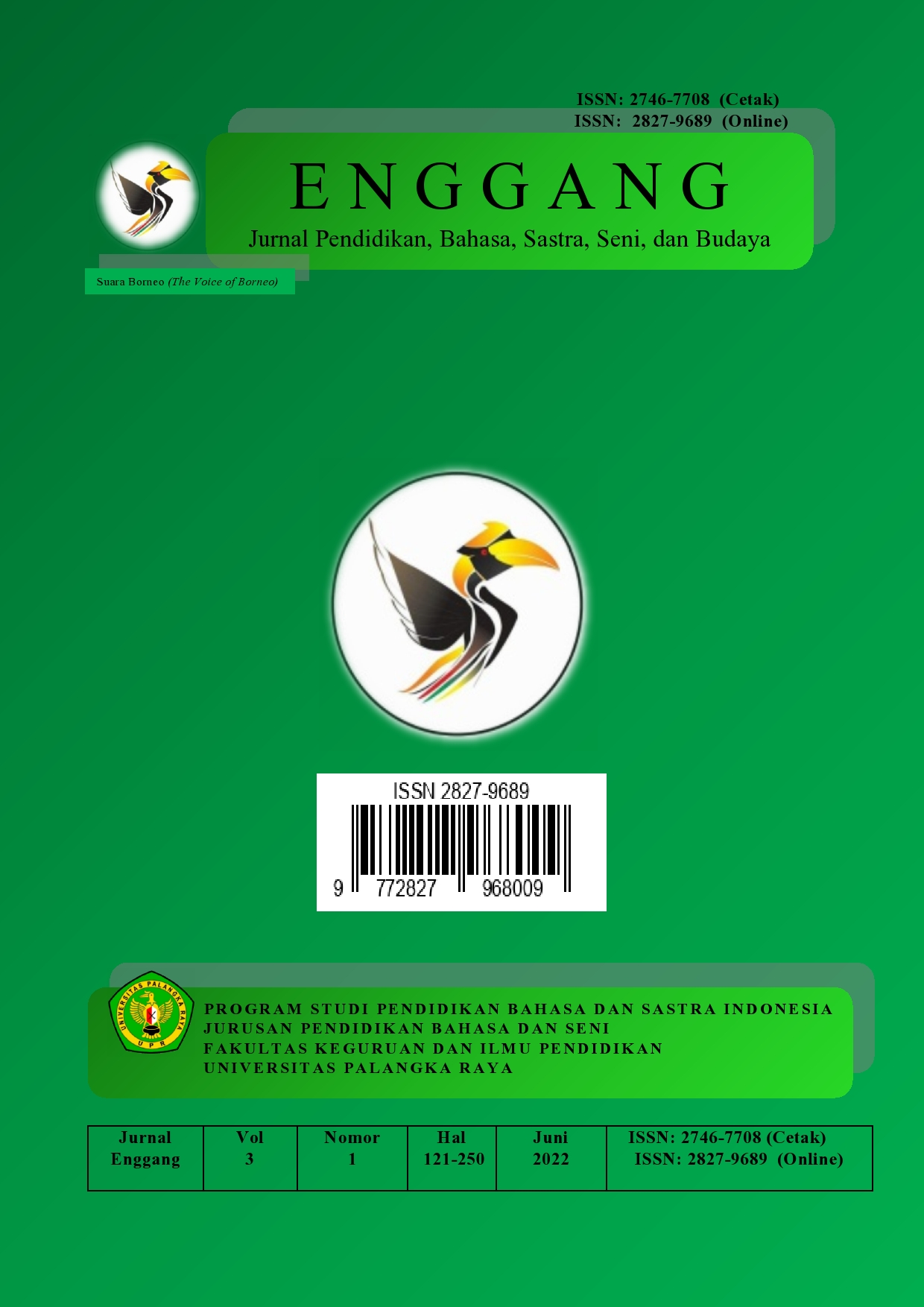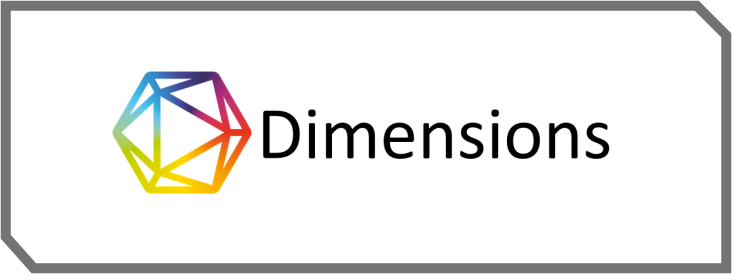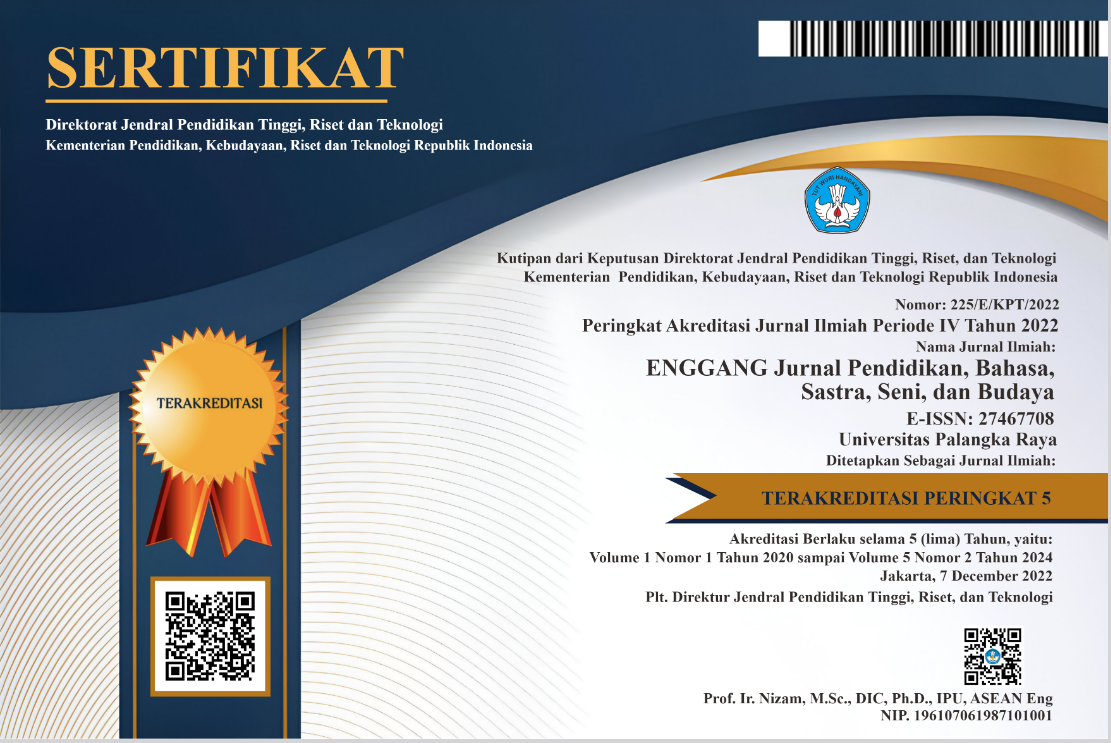Penggunaan Media Pembelajaran Berbasis Youtube Untuk Meningkatkan Hasil Belajar Peserta Didik Kelas X di SMAN 3 Palembang
DOI:
https://doi.org/10.37304/enggang.v4i2.10199Keywords:
Learning media, YouTube,, learning outcomesAbstract
One effort to improve student learning outcomes is to use good and appropriate learning media. The aim of this research is to determine the improvement in learning outcomes of class X students at SMA Negeri 3 Palembang through the use of YouTube-based learning media. The method used is classroom action research. The subjects of this research were 35 class X.5 students. The results of this research are that student learning outcomes in the learning process have increased, completeness of cycle 1 was 65.57% (24 students completed out of 35 students) with a percentage of student activity observations of 57.5% (Active) and teacher activity 87.2% (Very Good). Meanwhile in cycle 2 it increased to 90.43% (32 students completed out of 35 students. With an observation percentage of student activities of 77.5% (Active) and teacher activities of 92.8% (Very Good).
Downloads
References
Apriyanti, D., Syarif, H., & Ramadhan, S. (2021). Video feature making in esp-based public speaking class: A student centred learning in vocational higher education context. International Journal of Language Education, 5(1), 469–476. https://doi.org/10.26858/IJOLE.V5I1.15419
Arikunto, Suharsimi. (2008). Penelitian Tindakan Kelas.Jakarta: PT Bumi Aksara
Batubara, H. H., & Batubara, D. S. (2020). Penggunaan video tutorial untuk mendukung pembelajaran daring di masa pandemi virus corona. Muallimuna: Jurnal Madrasah Ibtidaiyah, 5(2), 21. https://doi.org/10.31602/muallimuna.v5i2.2950
BPS. (2020). Statistik Telekomunikasi Indonesia
Darmayanti, R., Sugianto, R., Baiduri, Choirudin, & Wawan. (2022). Digital comic learning media based on character values on students’ critical thinking in solving mathematical problems in terms of learning styles. Al-Jabar: Jurnal Pendidikan Matematika, 13(1), 49–66. http://ejournal.radenintan.ac.id/index.php/al-jabar/index
Dwi, M. (2020). Pemanfaatan teknologi pendidikan di masa pandemi covid-19: penggunaan fitur gamifikasi daring di universitas muhammadiyah pringsewu lampung. Al-Jahiz: Journal of Biology Education Research, 1(1).
Fauza, M. R., Inganah, S., Darmayanti, R., Prasetyo, B. A. M., & Lony, A. (2022). Problem solving ability: strategy analysis of working backwards basedon polya steps for middle school students YALC pasuruan. Jurnal Edukasi Matematika Dan Sains), 10(2), 353–363. https://doi.org/10.25273/jems.v10i2.13338
Fleck, B. K. B., Beckman, L. M., Sterns, J. L., & Hussey, H. D. (2014). YouTube in the Classroom: Helpful Tips and Student Perceptions. The Journal of Effective Teaching, 14(3), 21–37.
Gratsiouni, D., koutsouba, M., Venetsanou, F., & Tyrovola, V. (2016). Learning and Digital Environment of Dance –The Case of Greek Traditional Dance in Youtube. European Journal of Open, Distance and E-Learning, 19(2), 80–95. https://doi.org/10.1515/eurodl-2016-0009
Hariyani, F. (2017). Upaya meningkatkan hasil belajar peserta didik melalui penerapan model belajar kooperatif tipe student team achievement division pokok bahasan geometri di sman 3 palembang. Jurnal Penelitian Pendidikan Matematika. 1(2). 121-135.
Klotz, B. (2007). The central and eastern European online library (www.ceeol.com). Serials Librarian, 53(1–2), 191–201. https://doi.org/10.1300/J123v53n01_15
Maru, M. G., Manado, U. N., Nur, S., Makassar, U. N., Lengkoan, F., & Manado, U. N. (2020). Applying Video for Writing Descriptive Text in Senior High School in the Covid-19 Pandemic Transition. 4(3), 408–419
Maryani, A., & Nurfarizi, S. (2020). Pengembangan kreativitas inovatif melalui pembelajaran digital. Jurnal Online Universitas PGRI Palembang, 8, 274–282.
Nugroho, Y. S., Degeng, N. S., & Sihkabuden. (2017). Model Pembelajaran Cooperative Learning. Jurnal Pendidikan: Teori, Penelitian, Dan Pengembangan, 2(3), 416–423
Olasina, G. (2017). An evaluation of educational values of youtube videos for academic writing. The African Journal of Information Systems, 9(4), 232–261.
Pathuddin, H., & Raehana, S. (2019). Etnomatematika: Makanan Tradisional Bugis Sebagai Sumber Belajar Matematika. MaPan, 7(2), 307–327. https://doi.org/10.24252/mapan.2019v7n2a10
Pathuddin, H., Kamariah, & Ichsan Nawawi, M. (2021). Buginese ethnomathematics: Barongko cake explorations as mathematics learning resources. Journal on Mathematics Education, 12(2), 295–312. https://doi.org/10.22342/jme.12.2.12695.295-312
Rukiah & Julyanti, E. (2022). Pengaruh Penggunaan Media Pembelajaran Berbasis Blogger dengan Menggunakan Pendekatan Konstektual Terhadap Hasil Belajar Peserta didik pada Materi Pertidaksamaan Linier Dua Variabel. Jurnal Cendekia: Jurnal Pendidikan Matematika. 7(1). 958-968
Safitri, R. Darmayanti, U. Usmiyatun, & Nurmalitasari. (2023). 21st Century Mathematics Learning Challenges: Bibliometric Analysis of Trends and Best Practices in Shinta Indexed Scientific Publications. JEMS: Jurnal Edukasi Matematika Dan Sains, 11(1), 136–152
Sari, N., Kusuma, R., Marzuki (2022). The development of problem based aclipse multimedia in pancasila and citizenship learning to improve learning motivation of high school students. Atlantis Press. 167-176. https://doi.org/10.2991/978-2-494069-67-1_19
Sugiyono. (2017). Metode penelitian pendidikan (pendekatan kuantitatif, kualitatif dan r&d). Bandung: C.V Alfabeta.
Suwarno, M. (2017). Potensi Youtube Sebagai sumber belajar matematika. Pi: Mathematics Education Journal, 1(1), 1–7. https://doi.org/10.21067/pmej.v1i1.1989
Widarti, H. R., Rokhim, D. A., & Syafruddin, A. B. (2020). The development of electrolysis cell teaching material based on stem-pjbl approach assisted by learning video: A need analysis. Jurnal Pendidikan IPA Indonesia, 9(3), 309–318. https://doi.org/10.15294/jpii.v9i3.25199
Yani, A., Amin, M., Rohman, F., Suarsini, E., & Rijal, M. (2021). Pre-service biology teacher’s perception on local environment problems as contextual learning resources. International Journal of Evaluation and Research in Education, 10(3), 768–780. https://doi.org/10.11591/ijere.v10i3.21091












